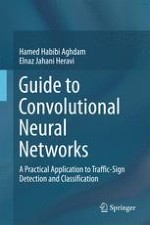2017 | OriginalPaper | Buchkapitel
2. Pattern Classification
verfasst von : Hamed Habibi Aghdam, Elnaz Jahani Heravi
Erschienen in: Guide to Convolutional Neural Networks
Aktivieren Sie unsere intelligente Suche, um passende Fachinhalte oder Patente zu finden.
Wählen Sie Textabschnitte aus um mit Künstlicher Intelligenz passenden Patente zu finden. powered by
Markieren Sie Textabschnitte, um KI-gestützt weitere passende Inhalte zu finden. powered by
